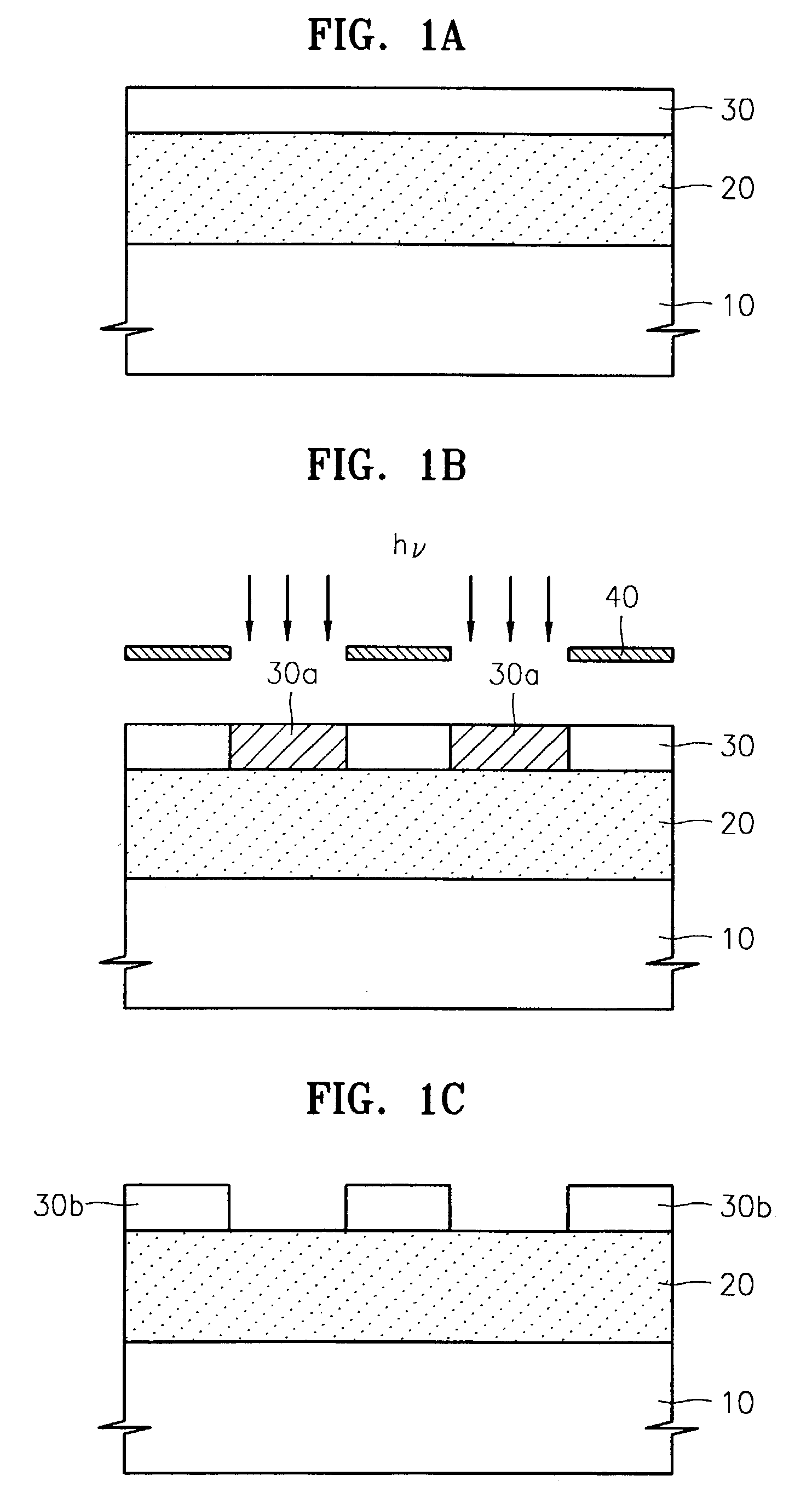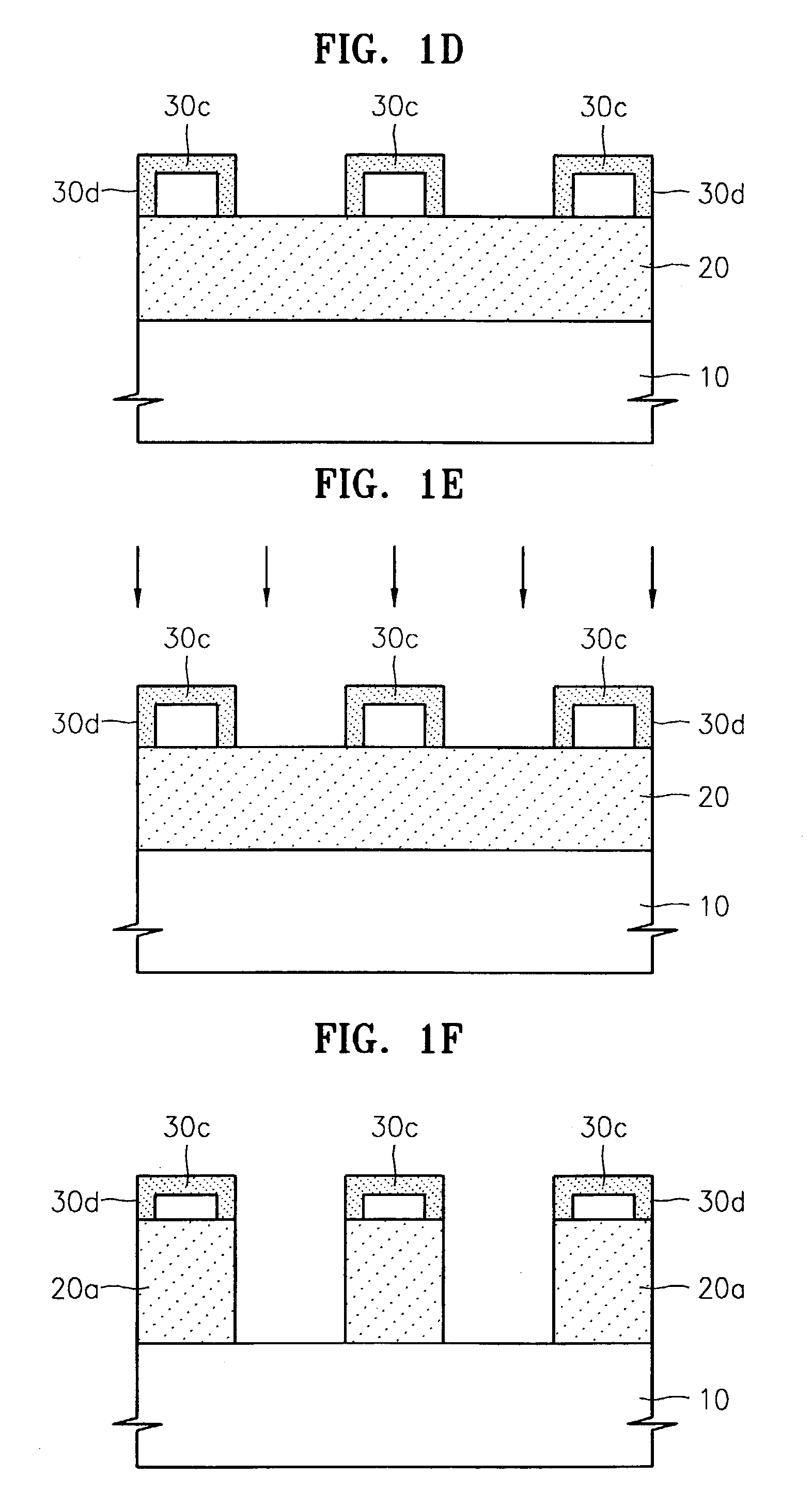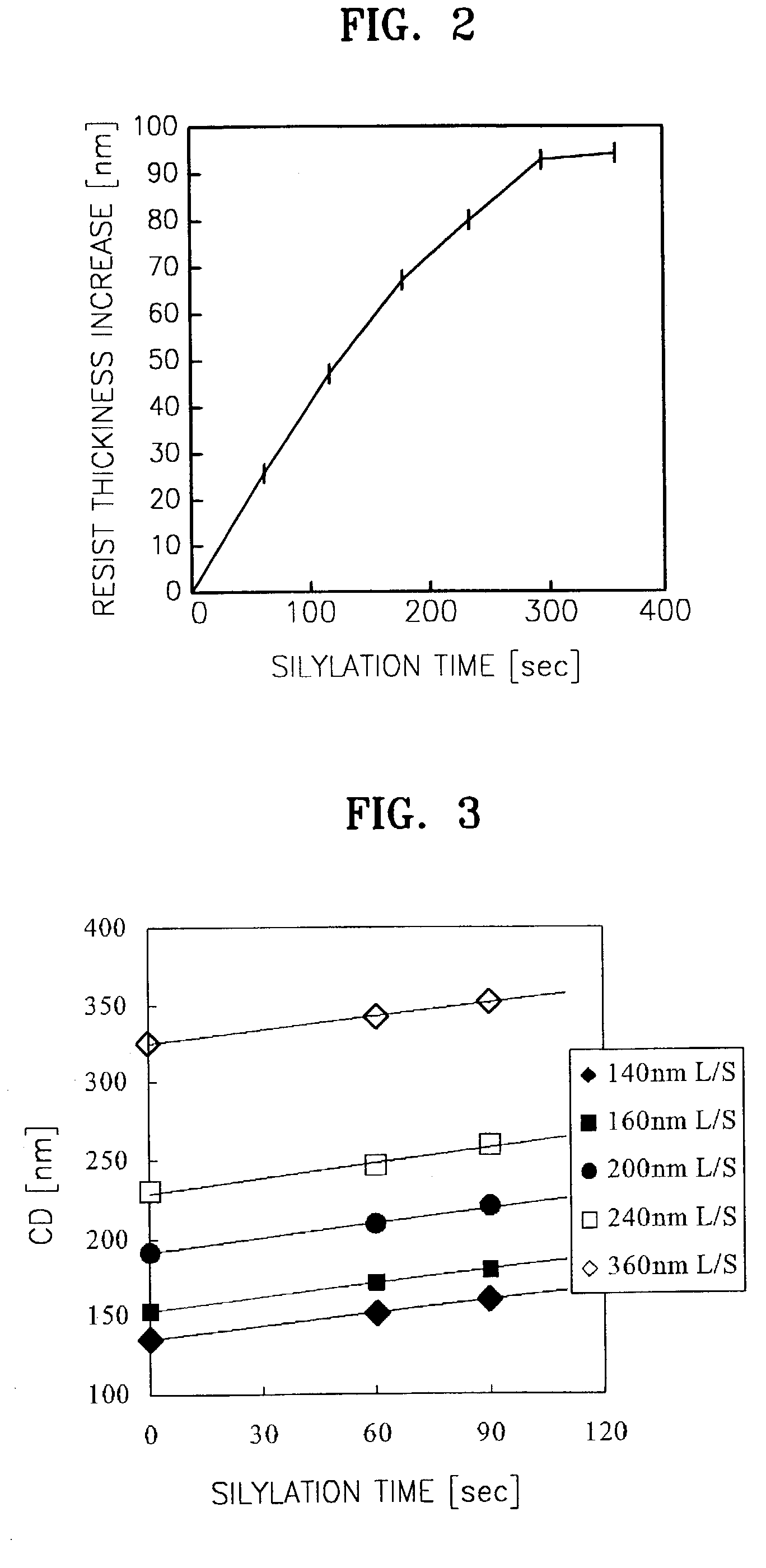Method of forming a photoresist pattern and method for patterning a layer using a photoresist
- Summary
- Abstract
- Description
- Claims
- Application Information
AI Technical Summary
Benefits of technology
Problems solved by technology
Method used
Image
Examples
Embodiment Construction
[0039]FIGS. 1A through 1F are cross-sectional views for explaining sequential process steps of a method for patterning a layer on a semiconductor substrate according to an embodiment of the present invention.
[0040]Referring to FIG. 1A, an organic anti-reflective coating (ARC) 20 is formed on a semiconductor substrate 10. The invention is not limited to any particular materials of the organic ARC 20, and conventional anti-reflective coating materials can be used. The organic ARC 20 may be formed to a thickness of approximately 0.02 to 1.0 μm.
[0041]Thereafter, a resist layer 30 is formed on the organic ARC 20, preferably to a thickness of approximately 0.1 to 1.0 μm. The resist layer 30 contains a photosensitive polymer having a hydroxy group, and can be formed of any material which is suitable for use in a photolithography process employing a desired light source, such as a KrF (248 nm) excimer laser, an ArF (193 nm) excimer laser, or a F2 (157 nm) excimer laser.
[0042]Preferably, the...
PUM
| Property | Measurement | Unit |
|---|---|---|
| Depth | aaaaa | aaaaa |
| Exposure limit | aaaaa | aaaaa |
| Photosensitivity | aaaaa | aaaaa |
Abstract
Description
Claims
Application Information
 Login to View More
Login to View More - R&D
- Intellectual Property
- Life Sciences
- Materials
- Tech Scout
- Unparalleled Data Quality
- Higher Quality Content
- 60% Fewer Hallucinations
Browse by: Latest US Patents, China's latest patents, Technical Efficacy Thesaurus, Application Domain, Technology Topic, Popular Technical Reports.
© 2025 PatSnap. All rights reserved.Legal|Privacy policy|Modern Slavery Act Transparency Statement|Sitemap|About US| Contact US: help@patsnap.com



